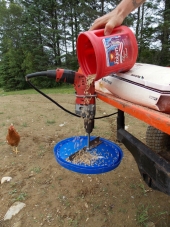




Check out my farm's website at http://www.ShireFolkFarm.Com, and keep an eye on Virginia Permaculture courses at http://www.ShenandoahPermaculture.Com
 1
1




 1
1












"You must be the change you want to see in the world." "First they ignore you, then they laugh at you, then they fight you, then you win." --Mahatma Gandhi
"Preach the Gospel always, and if necessary, use words." --Francis of Assisi.
"Family farms work when the whole family works the farm." -- Adam Klaus














Moderator, Treatment Free Beekeepers group on Facebook.
https://www.facebook.com/groups/treatmentfreebeekeepers/









Permaculture and Homestead Blogging on the Traditional Catholic Homestead in Idaho! Jump to popular topics here: Propagating Morels!, Continuous Brew Kombucha!, and The Perfect Homestead Cow!








Furthering Permaculture next to Lake Ontario.
www.oswego.edu/permaculture




Furthering Permaculture next to Lake Ontario.
www.oswego.edu/permaculture




 Sorry I've been slow answering your questions, between getting ready to move, working full time, travelling for a wedding, and inspections to finalize purchase details it's been a really busy spring for us so far!
Sorry I've been slow answering your questions, between getting ready to move, working full time, travelling for a wedding, and inspections to finalize purchase details it's been a really busy spring for us so far!
Check out my farm's website at http://www.ShireFolkFarm.Com, and keep an eye on Virginia Permaculture courses at http://www.ShenandoahPermaculture.Com

|
Whip out those weird instruments of science and probe away! I think it's a tiny ad:
Learn Permaculture through a little hard work
https://wheaton-labs.com/bootcamp
|

